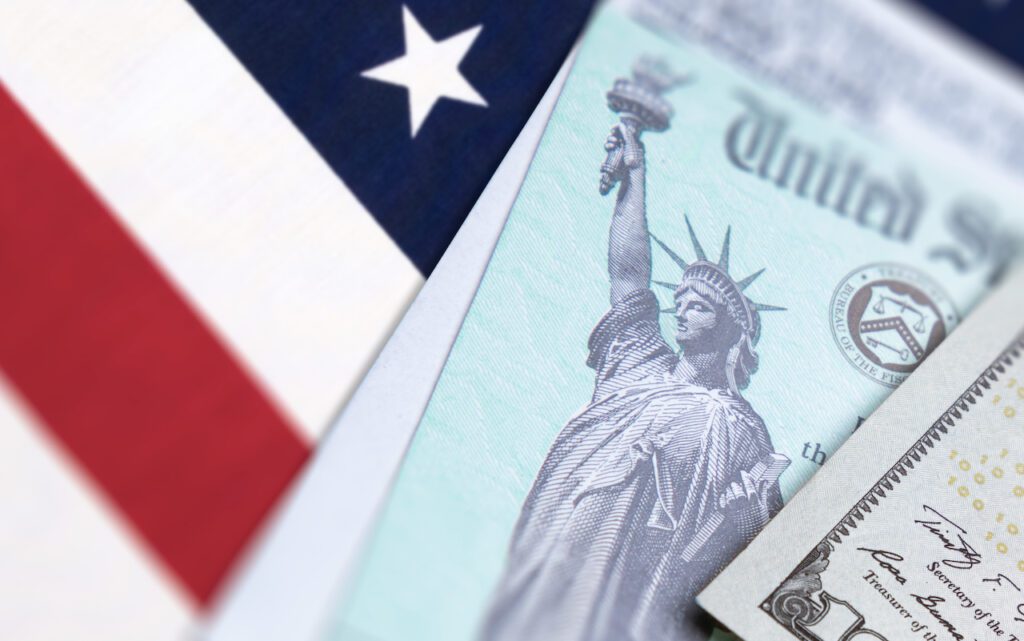The US Treasury Curve is the most inverted it has been since 2000 and Yields are the highest they’ve been since 2006 — reinforcing growth and investment concerns still to come. Many investors are asking — “When will my bonds have a positive return again?” Rates are still going higher for structural and cyclical reasons, but doesn’t mean there isn’t value in bonds. The front end (1-3 year) offers some of the best defined returns in 15 years. You can build a “high quality 5%”.
Curve inversion – still suggests a weak economic outlook and market caution
At its basic level – curve inversion is when short-term borrowing costs (usually the 2-year part of the curve and under) exceed long-term borrowing costs (usually 5-years or greater). The bulk of private borrowing in the US economy happens at the short-end of the curve (outside of the housing market), so it’s the near-term rates that matter significantly for an economic outlook. A rising cost of borrowing increases the cost of capital, which lowers demand for credit, which slows the ability to pay for goods and services, so economic transactions slow and overall growth slows.
Raise the near-term cost of borrowing enough compared to the long-term and households, companies, and governments will put off purchases into the future when they expect they will be cheaper. This is the point when demand drops, growth turns negative, and inflation decelerates, exactly what the Fed is attempting to do.
It’s not just the Fed. All Central Banks are raising rates, and will continue to do so for some time
So how does this square with APCM’s fixed income views? Let’s take a moment to reiterate our Q2 2022 calls:
- Peak inflation – Not necessarily peak rates. Improvements in inflation will be seen throughout 2022 & 23, but a sticky underlying core trend suggest a longer tail to the inflationary environment. We project higher yields.
- Fed to engineer growth below potential. For the inflation regime to change, US GDP needs to run below potential growth (a negative output gap). An inverted yield curve and weaker household demand helps.
- Lower Federal Reserve balance sheet, lower market liquidity, more volatility. US Quantitative tightening (QT) accelerated to $95bn in September. QT is a global phenomena, with no real historical precedence on rates curves.
- Investing in late cycle markets – Caution is warranted. Lower duration as yields rise. Bias higher quality and sector selectivity in credit.
All four are still valid and underpin our daily investment decisions.
Looking forward, central banks are engaged in global tightening at the fastest pace in 42 years. GDP weakness (growth), stock bottoms (Dow Jones, S&P 500, Nasdaq) and relief in borrowing costs (the first Fed cuts) all lag curve inversions, making this a time for caution. Inversions are likely to go further with the hiking cycle not done:
- Fed policy has raised the overnight borrowing rate by 3.25% in 2022. The outlook projects an additional 1.25% by year-end and another 0.25% by March 2023. That will take the overnight rate to 4.5%.
- The Fed is not alone. Canada is expected to raise rates to 4.0% (by Jan 2023), Europe to 3.25% (Sept 2023), the UK to 6.25% (May 2023), and Australia to 4.3% (June 2023). With the US these economies make up about 50% of World GDP – and 50% of US listed companies revenue come from overseas.
- By the time central banks finish in Mid-to Late 2023, overnight rates for major economies will have increased by a cumulative 22%, a cumulative borrowing expense not seen since 2006.
Tracking the change to come
That’s the view. Global hikes into the middle of next year, then pause. It’s hard for markets to have confidence with what is basically being communicated as a “wait and see” approach.
But all cycles have a way of pointing to their own end, and APCM can slide up and down the risk scale based on an evolving outlook.
In our fixed income investment meetings we track the practical: money supply, credit demand, default protection, relative pricing (HY, IG, Mortgage), fed projections, macro-constraints, external demand, incoming revenue and of course market pricing. A few example charts are below. These metrics all point to struggling markets in the near-term, but they also help us quantify when longer duration assets will turn attractive. This gives us confidence that a more financially positive outcome is approaching in 2023 – about the same time as the recent curve inversions take hold on the real economy.
We are bearish – but that doesn’t mean we don’t see value
For the first time in two decades, yields are getting to levels we see as historically attractive. Short-end investment grade corporate debt is yielding 5.3% (Chart below), with multiple select names in the 1y sector greater 6%. The probability of default for these high-grade US corporations is well less than 1%. Another way to look at this, assuming no corporate default in 1y (which is reasonable), 1y US Treasury yields would have to increase by greater than 5.3% in the interim before the corporate bond to lose money.
As a more concrete example, you can construct a 50/50 portfolio of US Treasuries and US Investment Grade Credit yielding over 4.8%. This portfolio has a duration of 2 years, volatility of 2.3%. For comparison, the 2y earnings yield on the S&P 500 is 6.3% (with a vol 11.2%) and Nasdaq is 5.3% (vol 14%). In uncertain times (at home and abroad) the front end of US fixed income has very attractive returns for a volatility that is a fraction of other assets.
So while we are bearish, there is value in the front end. In the hunt for 5%, fixed income is looking a lot more attractive. If you’re willing to hold to maturity, investors can capture the strongest yields in 15 years that let you sidestep a lot of market uncertainty.
Richard Cochinos, CFA®, CAIA®
Senior Portfolio Manager
10/3/22














